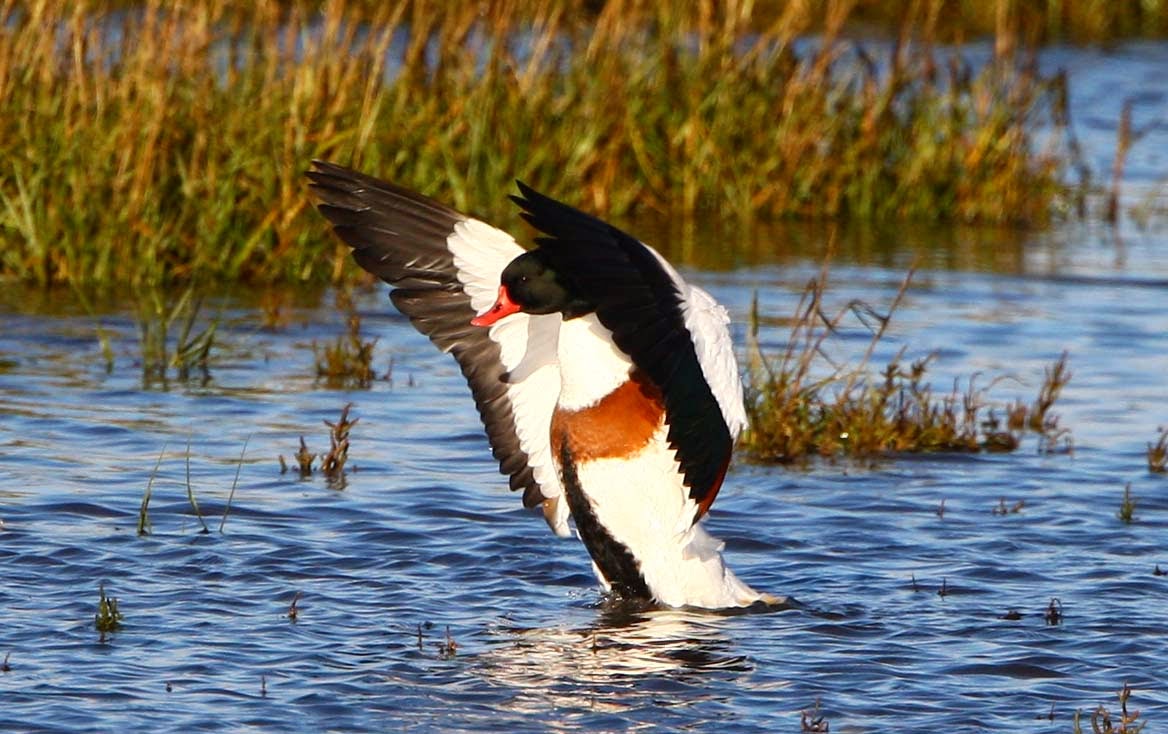David, one of our volunteer guides at the Window on Wild Lindisfarne, has another piece for us about his tales from the Window. David has had a busy weekend there, with more visitors to the island and the NNR now that Easter is approaching.
David writes:
Saturday 5th April
HOLD THE PRESS!
There were two shelduck on the scrape having had only one for 4 weeks (approx). It was warm at 15C and hazy sunshine. Main car park 90% full! About 120 visitors per hour for more than 3 hours. 2 shelduck, 5 teal and some gulls plus 3 oyster catchers, 1 curlew and 1 heron later on. 8 wood pigeons, 1 pied wagtail and 3 starlings on the pond under the window. Arrivals spread out nicely (i.e. the people).

Shelduck - probably not the famous individual of the scrape however
One woman was eating an ice cream in the shape of an oyster!!! It did not look appetizing. One couple know my cousin in Thorne near Doncaster. Regular visitor from north east London made herself known - she comes once a month! One guy from Poland, which made explaining shelduck interesting. Husband and wife team from Castle who Laura and I met at Budle Bay expressed an interest in volunteering - don't tell National Trust.
It was so warm I had my Natural England fleece on top. Of course I can't get it off but I'll go back to the WOWL tomorrow so it won't matter if I leave it on.
Sunday 6th April
Different day from yesterday. Very breezy, even warmer 17C, cloudy. Main car park 75% full. Even more water all across the road coming back, perhaps due to north west wind/squall. I forgot to return the Window keys to the Reserve office because I had left the washing on the line and it started to pour down as I reached the level crossing - which was closed!!
Perhaps saw 75 visitors in 2 hours, 2 shelduck being a bit aggressive, 5 black headed gulls, 5 teal, 3 herring gulls, 5 Brent geese then one then none and 1 pied wagtail at the pond under the window.
Visit the Window on Wild Lindisfarne and you may see small groups of dark-bellied Brent geeseon the scrape.
One party of ten 8 year olds had me worried but they were fine, quite few children in total. One elderly couple from Devizes come every year and stay on the Island. Several visitors had (normal) ice creams - must be summer. Nearly 75% of one box of Natural England's NNR leaflets have gone already.














